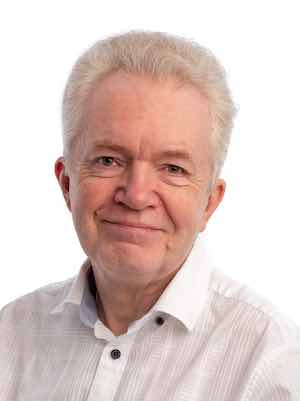Things have sped up on climate change in all sorts of ways in 2017.
In January, I wrote a briefing titled “Donald Trump, the Environment and the Church” for the John Ray Initiative, where I serve as operations director.
I have spent a lot of time this year monitoring the Trump administration and wrote a blog for JRI about the U.S. withdrawal from the Paris Agreement.
However, in the summer and autumn of 2017, the climate itself has made the big headlines.
Where to start? There have been so many disasters and records broken that it would be impossible to list them all here.
The underlying trend to remember is that 2017 is on track to be one of the warmest years on record globally, possibly the second warmest. Such record warm years usually happen in El Niño years, but 2017 is not one.
In August and September 2017, climate-related disasters have filled our newspapers and media.
As is usually the case, it has been the poor who have suffered most and the Indian subcontinent has been devastated by floods. More people were killed there than in the U.S., but media attention has mostly been devoted to the two major hurricanes, Harvey and Irma.
Was climate change involved? Almost certainly yes.
Warmer oceans mean that hurricanes gain more energy from the sea, and sea level rise exacerbates storm surge effects.
It is also possible that changes in the jet stream caused Hurricane Harvey to stall over Texas dumping huge amounts of rain.
I think most people reckon Twitter is a plaything, but not me. By following climate scientists, meteorologists and the right organizations, I find I can frequently get better information and get it faster.
So while all the media attention was on Harvey, I could already see scientists were worried about Irma.
For some time, it was uncertain what track Irma would take, but then the models suggested the Caribbean and Florida were the most probable destinations. Sadly, that turned out to be the case.
I then followed the Twitter account for the National Weather Station at Key West on the Florida Keys.
The brave scientists there holed themselves up in their hurricane-proof building and kept reports going out throughout the storm. They all deserve medals.
Hurricanes Jose and Maria, along with Tropical Storm Lee, are all being closely monitored to help those in their projected paths make plans and preparations.
There has been much debate online about whether it is right to discuss climate change in the context of major disasters when they are unfolding in front of our eyes.
Some argue that climate scientists are trying to make capital out of the events and are being “political.” Is it sensitive to discuss these issues when people are dying?
I have concluded that we must discuss climate change now if we are to prevent people from dying in the future.
Personally, I have friends and relatives in California (where there has recently been both a record heatwave and extensive wildfires), Texas, Florida and other affected areas.
Some are suffering greatly now, and I don’t want them to think I am getting at them or, even worse, saying, “I told you so.” I worry about them constantly and I pray for them.
But it has become part of my job and calling to report on climate change. My JRI colleagues and I – as well as Christians around the world – cannot be silent at this time.
The truth is that the predictions that Sir John Houghton and others made 15 years ago at the Oxford meeting are rapidly coming true.
Climate scientists often are criticized for alarmist statements, but actually most of the time they are pretty conservative. If anything, the effects of climate change are happening faster than we thought.
What can we do? This is a huge topic, and we can only be brief.
Essentially, we need both adaptation and mitigation and we need them fast.
In the developed West, we need to make sure that we build sensible buildings in sensible places. We need to increase our international aid to help poor countries do the same.
Cutting carbon emissions as fast as possible and deploying renewable technologies at speed are essential.
Also, as Christians we can push our churches in a more sustainable direction and we can pray.
Martin J. Hodson is a plant scientist and operations director for the John Ray Initiative. He has more than 100 research publications and speaks widely on environmental issues. A version of this article first appeared on the JRI blog. It is used with permission. You can follow him on Twitter @MartinHodson1.
An environmental scientist on the board of The John Ray Initiative, a UK-based charity connecting environment, science and Christianity. He recently published the 2nd edition of A Christian Guide to Environmental Issues and Green Reflections: Biblical Inspiration for Sustainable Living (both co-authored with his wife, Margot).

